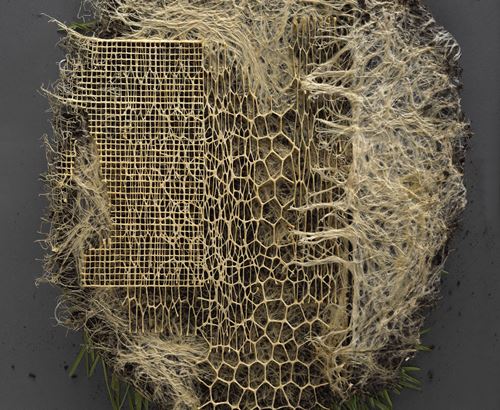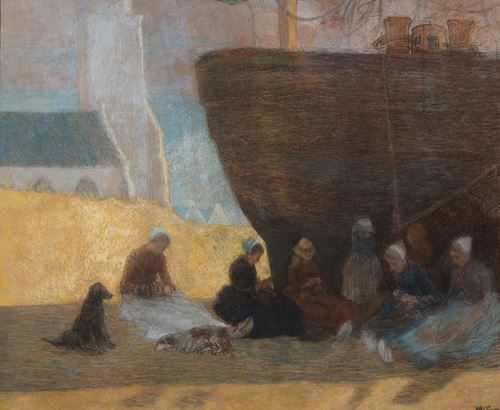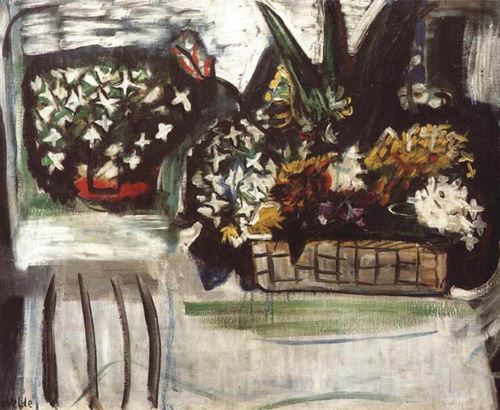A Massive Eight Fold ‘Byobu’ Screen with Nine ‘Manchurian’ Cranes
description
Provenance
Private collection UK
Detail Description
This exceptional, very large screen depicts seven ‘Manchurian Cranes standing and eating, while a ‘pair’ of cranes gently glide downwards to join the ‘flock’.
‘Byobu’, which means wind walls (屏 byo wall and 風 bu wind), are ornate and decorated ‘mobile’ walls used to separate interior spaces and provide privacy within a section of a room. As their name suggests, they were originally used as windbreakers in the ‘airy’ Japanese residences of antiquity.
Born into the family of the feudal Lords of Himeji castle, Sakai Hōitsu had a privileged upbringing providing him the opportunity to study Noh drama, haiku poetry, tea-ceremony, music and painting. As was common during the Edo period, Hoitsu began his study of painting with the officially sanctioned ‘Kano School’, later receiving influence from and instruction in the contemporary Ukiyo-e, Maruyama-Shijo and Nagasaki styles. Taking ‘tonsure’ as a monk in 1797 Hoitsu freed himself of his significant familial obligations and immersed himself in the study of the life and art of Ogata Korin (1658 - 1716). He was inspired by the fact that a century earlier Hoitsu’s family had been among Korin’s chief patrons; numerous masterpieces by Korin were preserved in their family collection.
In 1815, 100 years after Korin’s death, Hoitsu published ‘Korin Hyakuzu’ (One Hundred Paintings by Korin), woodblock print reproductions of paintings by the master. Besides honouring Korin in this way, he clearly traced the lineage of what would come to be known in a later age as the Rinpa (Rimpa) School. Hoitsu, while taking Korin’s works as his model, went on to create highly affecting works reflective of the refined tastes of his day.

contact
Finch & Co.


,sinaasappels,kersen,druiveneneenoester__T638310144969505163.jpg?width=500&height=410&mode=crop&format=jpg&scale=both&qlt=80)


